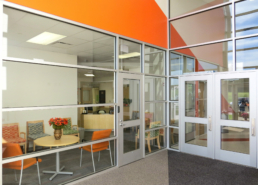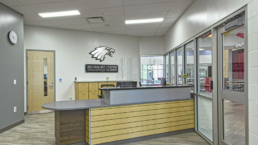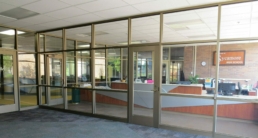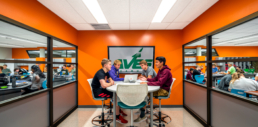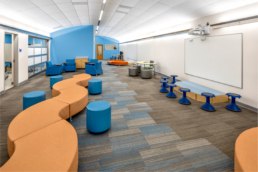
What is Passive School Security and Why is it Essential?
Earl Crossland, RA, LEED-AP | VSWC Vice President + Architect
Most people think of school security in terms of locks, cameras, sensors and electronic access controls. These are all considered Active Security measures.
But is there a way to plan schools so that they are intrinsically safer?
This is called Passive Security Design. It involves laying out the building so that natural surveillance and supervision by staff is enhanced.
School Entry:
Beginning at the school entry, it is important that the office receptionist can see incoming visitors before they reach the electronically controlled front door. Next, visibility should extend to the security vestibule with locked interior doors that force visitors to enter the office reception area through another controlled access door. Student access to the office is usually through a separate door from the secure side of the entry area. It is desirable to have separate visitor and student seating/waiting areas to avoid mixing of the two groups. If a security officer is employed, visibility and adjacency to the reception area is also important.
Common Areas:
Ideally, common areas of a school should be visible from staff offices and work areas as well. Viewpoints may include the reception office, copy/work rooms, intervention offices and teacher prep rooms. Large schools often disperse administrative offices to enhance supervision throughout the building. Staff restrooms may be located near student restrooms to provide supervision as part of daily circulation patterns. Views from corridors and common areas to outside education and play areas also improve overall security.
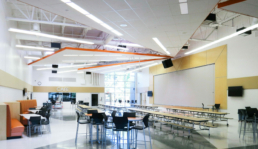
Classrooms:
There is often a debate about including interior windows between classrooms and corridors. Passive Security Design tries to balance visibility and supervision with protection and security. A corridor wall can have both windows and a portion of solid wall that students can shelter behind in an emergency. Where Extended Learning Areas (ELAs) replace corridors outside of classrooms, interior windows, sliding glass walls, or glass garage doors become essential for supervising students.
In the final analysis, combining Passive Security Design with traditional Active Security measures creates a visually open yet secure learning environment.

